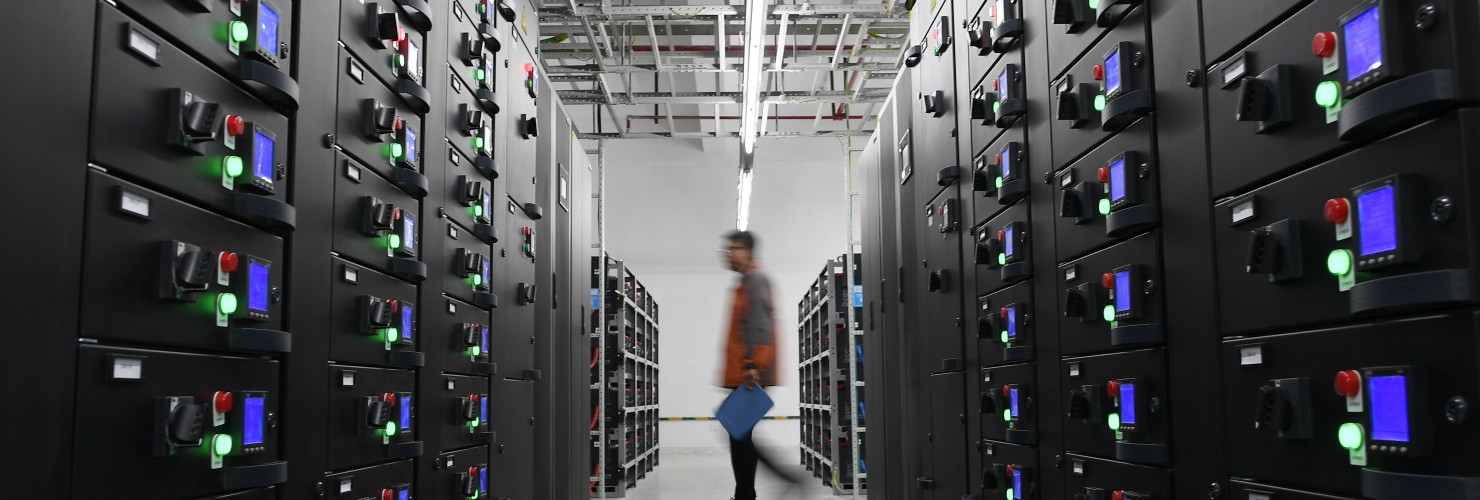

Oceans of data lift all boats: China’s data centers move west
Beijing sees provincial data-center construction as a way to spread the benefits of the digital economy beyond the developed cities of the east coast, says Jeroen Groenewegen-Lau.
This piece is the second part of a three-part series on data as a factor of production and a national resource in China, written by analysts in the MERICS Research Team on Science, Technology and Innovation Policies.
Zhongwei relocated farmers that cultivate the wolfberries and watermelons the city is known for to make way for an industrial park. A flagship project in northwestern Ningxia, the park is aiming to increase the province’s data-center capacity from 30,000 server racks in 2020 to 720,000 in 2025 and boost the scale of the regional digital economy seven-fold. A proponent of building data centers in poorer inland regions, the central government in Beijing is fully supportive – even if Zhongwei is over 1,200 km away from the metropolis which its data centers are supposed to serve, leading corporate customers to worry about latency, security and convenience. Zhongwei’s data centers sat two-thirds idle in 2021.
Beijing’s “East Data West Computing” plan defies market logic. IT firms want to process data close to most of their customers in China’s three major clusters, Beijing, Shanghai and Guangzhou-Shenzhen-Hong Kong. But the central government sees data-center construction as a way to spread the benefits of the digital economy beyond these developed coastal cities – with the added benefit of better insulating China’s domestic market from external shocks. The abundance of land and of renewable energy in these inland locations make for yet another political upside, as China is seeking to reduce its carbon footprint even while expecting demand for data storage to grow an annual 20 percent in the coming years.
When viewed like that, the project stands in a long tradition of large projects to build up China’s economy, recently involving water (the South-to-North Water Diversion Project), transport (high-speed rail), electricity (ultra-high voltage transmission from West to East) and telecoms (5G). Data is another opportunity for these nation-building efforts, having been raised in 2019 to the level of an official “factor of production” next to labor, land, capital and knowledge.1 These large engineering projects are costly and economic break-even often requires a long-term perspective. But for Beijing they may still make good sense for a variety of other reasons, including national economic and social development goals.
China’s stubborn Covid-19 problem and the effects of Russia’s war on Ukraine mean that the country is struggling to hit its economic growth targets for the first time in decades. Beijing announced extra tax relief worth 140 bn RMB in May and hinted more stimulus was on the way. Data center construction will benefit as part of so called “new infrastructure,” bringing in capital the sector does not have. The National Development and Reform Commission reckons building the eight data center clusters will cost about 400 bn RMB per year – while data centers had a turnover of 150 bn RMB in 2021, according to the Chinese Academy of Information and Communications Technology, a government-affiliated think tank.
A considerable chunk will be invested by China’s three state-owned telecommunications companies, which together mustered 185 bn RMB to spend on 5G base-station construction in 2021. Ningxia approved data centers worth about 1 billion RMB in Zhongwei in April that were led by the three telcos and another central state-owned enterprise, China Broadcasting Network Group.2 All the companies involved know the economic benefits of investing in data centers will not materialize in the short term – and that these projects will only truly take off if commercial clients’ concerns are overcome.3 Their top worry is latency, the time it takes for data to travel from one designated point to another, which increases with distance.
Pinging between data center hubs now takes about 50 milliseconds4 and should require only 20 milliseconds by 2023, as the Ministry of Industry and Information Technology stipulated in 2021. Ningxia is even aiming for 5ms one way between its cluster in Zhongwei and the provincial capital Yinchuan. These are ambitious goals, as several commentators point out. Also, data packages frequently get lost in the Northwest, causing further delays, notes Wu Hequan 邬贺铨, a top government advisor on digital policies.5 Wu has implored provincial governments to do more than allocating land, and improve overall infrastructure. He also proposes a distinction between frequently accessed “hot” and less often used “cold” data.
Despite these problems, an abundance of wind and solar power could still open these inland regions a pathway to high tech development. With the growth of data, China expects data centers to multiply so that that they become increasingly prominent in national energy consumption – rising from about 1.5 percent in 2020 to 4 percent by 2025 and over 5 percent by 2030, according to the Ministry of Ecology and Environment.6 For China to be able to digitize at this rate while still meeting its carbon-neutrality goals, Beijing has no choice but to move data centers West – to cooler climates with plentiful renewable energy. But for this strategy to work, data centers will still have to become more energy efficient.
By 2025, data centers are required to reach power utilization efficiency (PUE) rates below a factor of 1.5,7 meaning that no more than a third of energy should be used for things other than IT equipment, such as cooling. Targets will be further tightened, starting in the eight proposed data center hubs. Baidu used artificial intelligence to reach yearly average PUE rates of 1.08 at a facility, according to CAICT. Beijing needs these kinds of innovation more than short-term cost efficiency. It has committed to moving data centers west to help propel the nation towards high-quality development. But reluctant data-center users could still gut the project, leaving Zhongwei’s relocated farmers with a herd of white elephants.
This piece is the second part of a three-part series on data as a factor of production and a national resource in China, written by analysts in the MERICS Research Team on Science, Technology and Innovation Policies. This series entails also the following short analyses:
China activates data in the national interest by Rebecca Arcesati.
Beijing’s watchful eye on all data flowing in and out of China by Kai von Carnap.
- Endnotes
-
1 | The National Informatization Five Year Plan (2021-2025) and an official blueprint for digital infrastructure frame data center integration as a condition for more equal access to key resources (such as supercomputing, cyber defense and data) within the nation, as well as for innovation in digital technologies.
2 | https://www.163.com/dy/article/H4P8FBCI0511A641.html
3 | https://docs.google.com/document/d/1VnNo323Hp7bO7zv4-I6z8JOaceeTNZvLsMz-AahoTs8/edit
4 | https://www.infoobs.com/article/20220221/52575.html
5| https://www.yicai.com/news/101388167.html
6 | http://www.ce.cn/cysc/stwm/gd/202202/10/t20220210_37319445.shtml
7 | 2021 年 10 月《关于严格能效约束推动重点领域节能降碳的若干意见》
